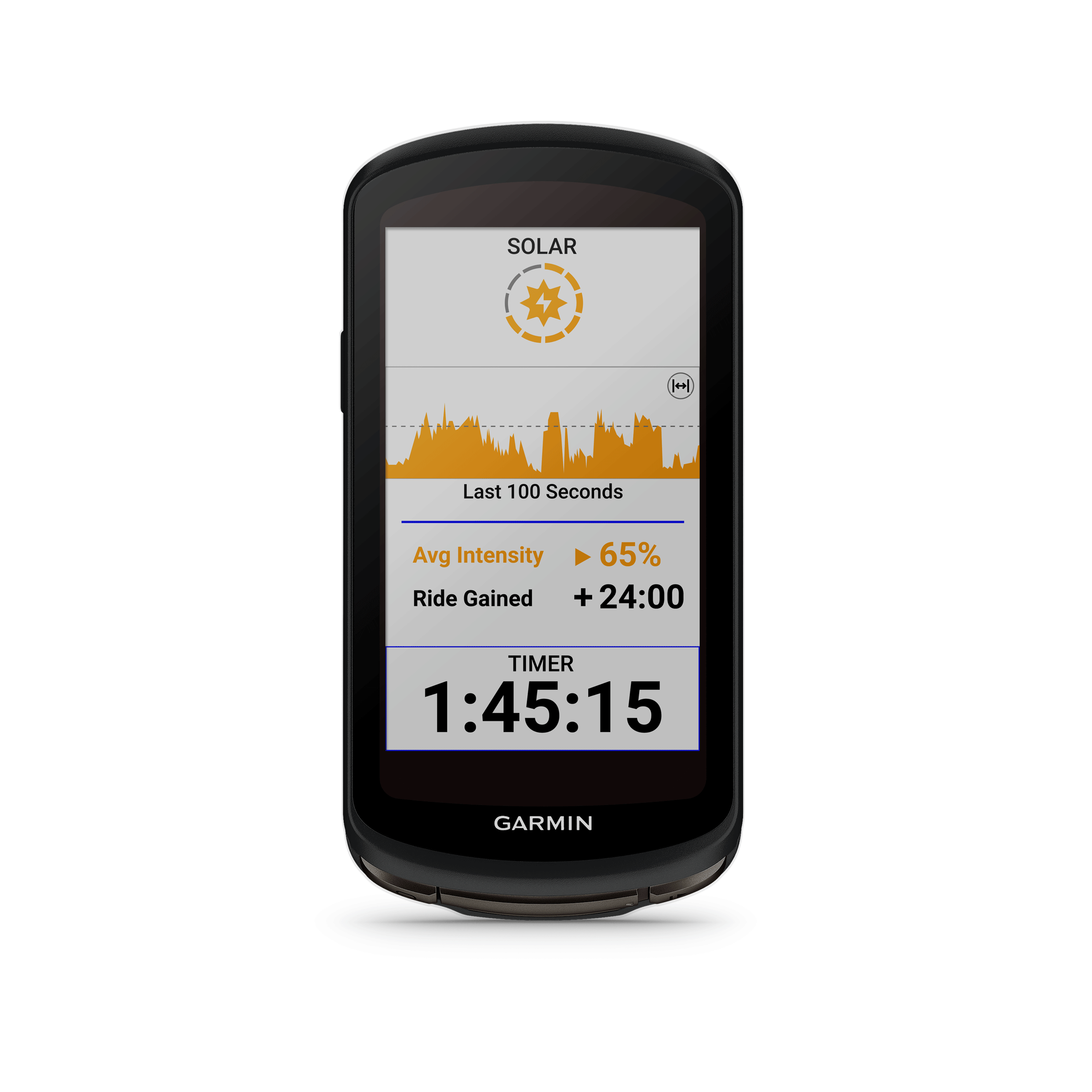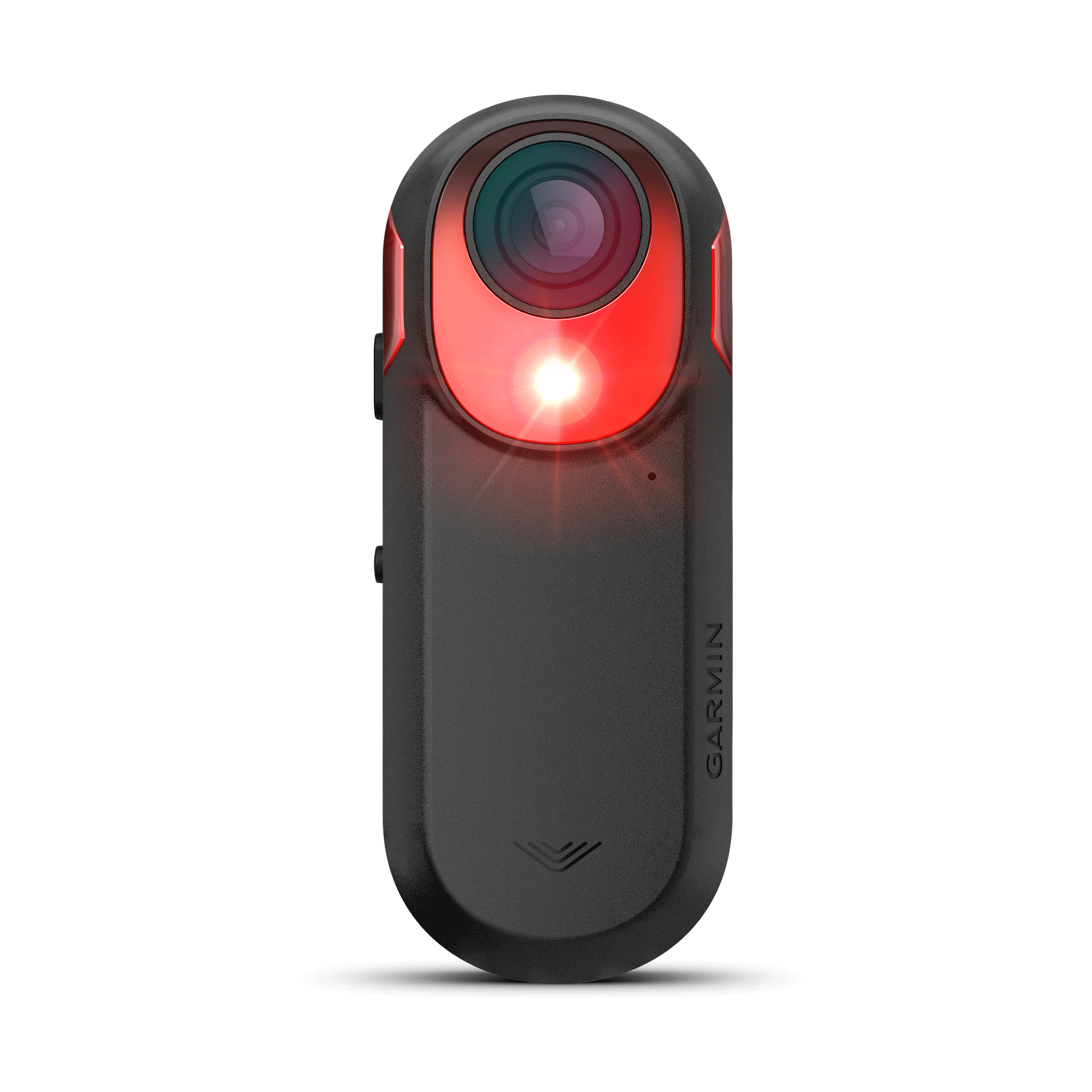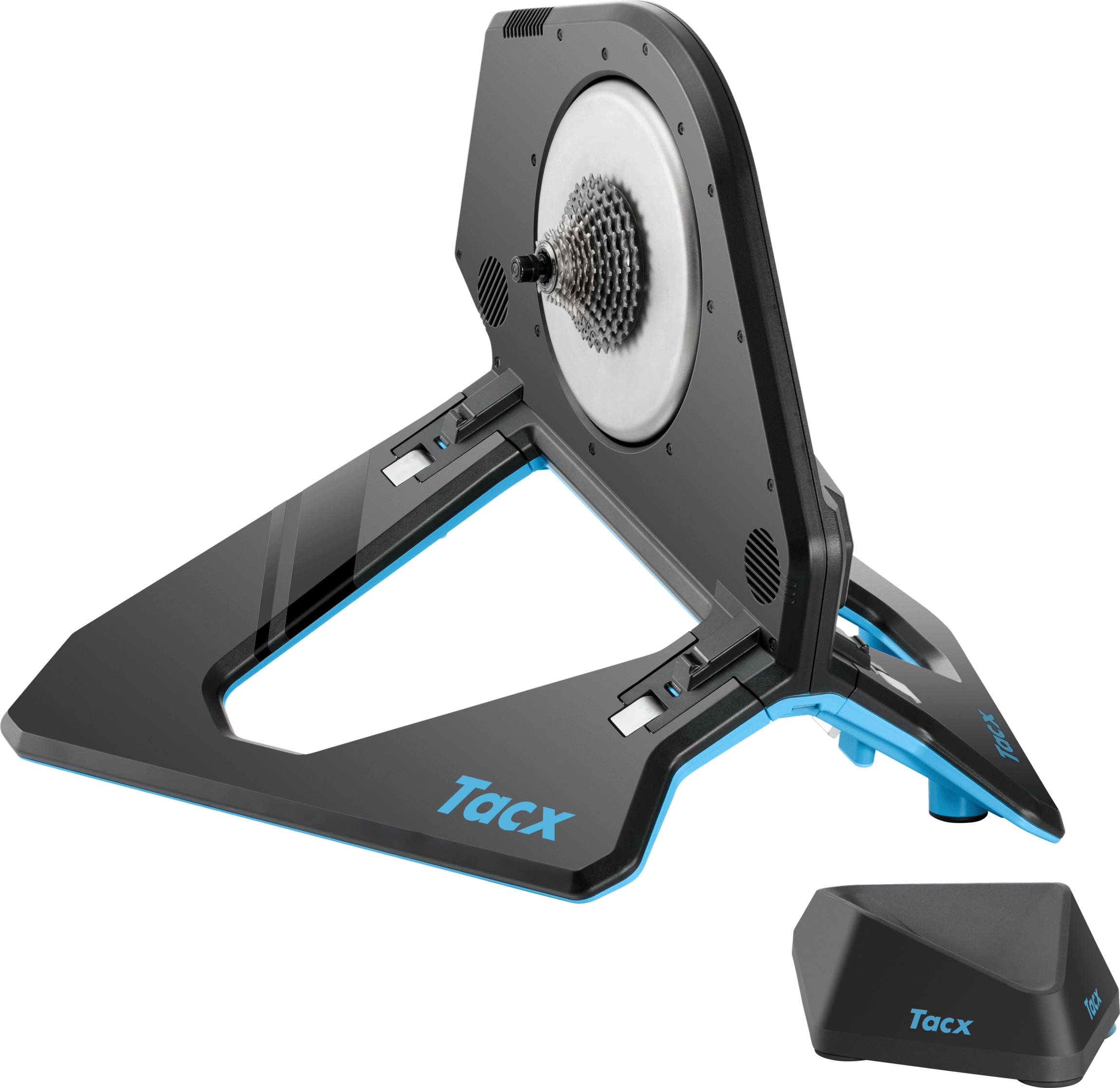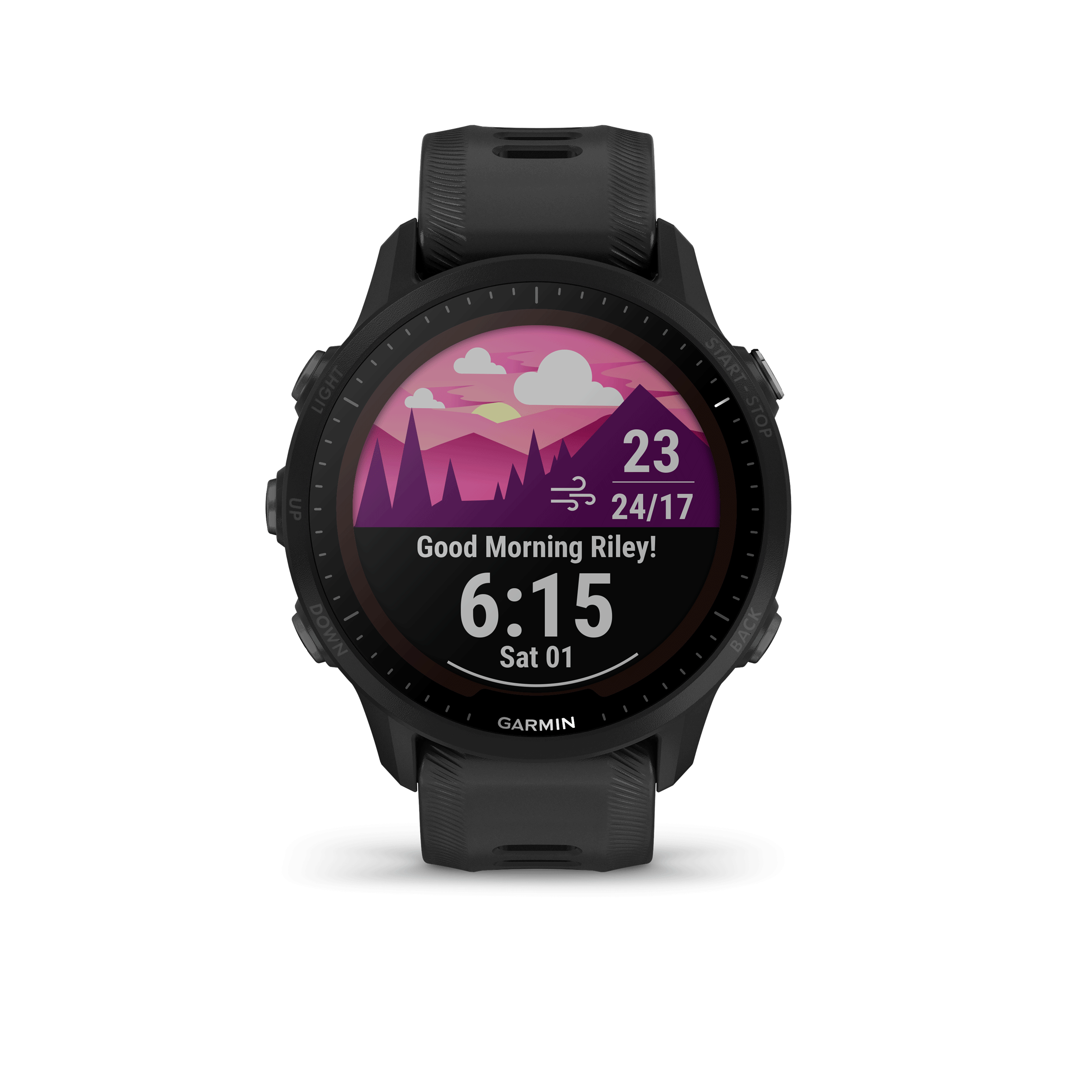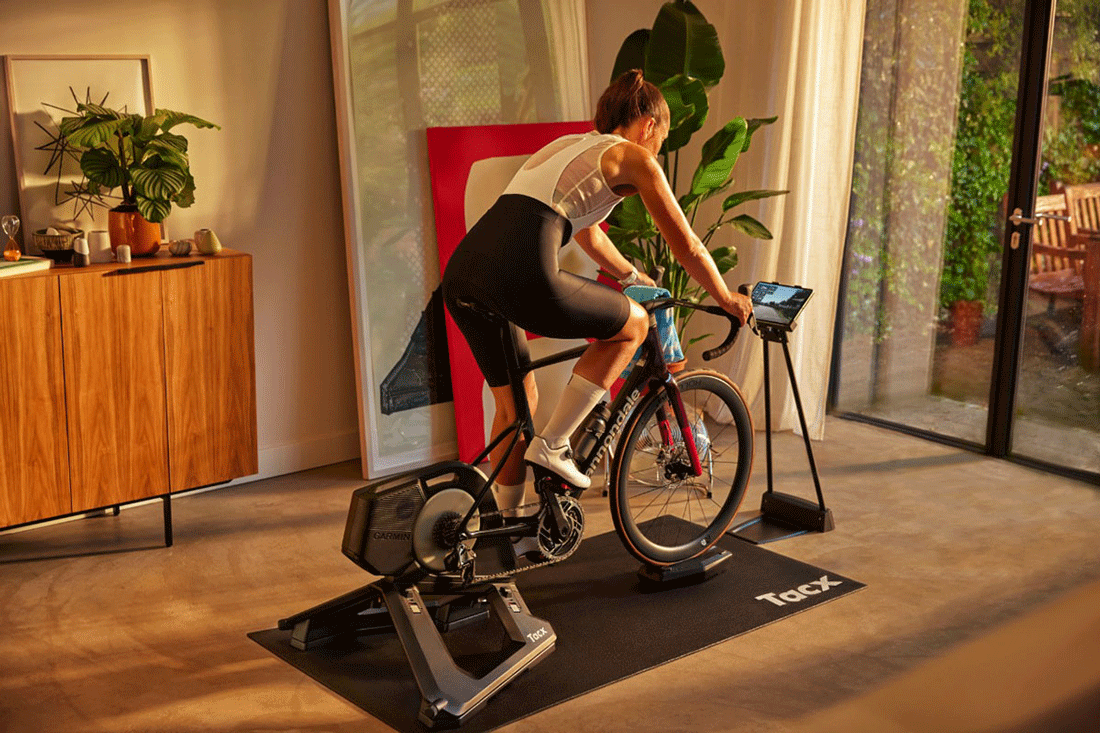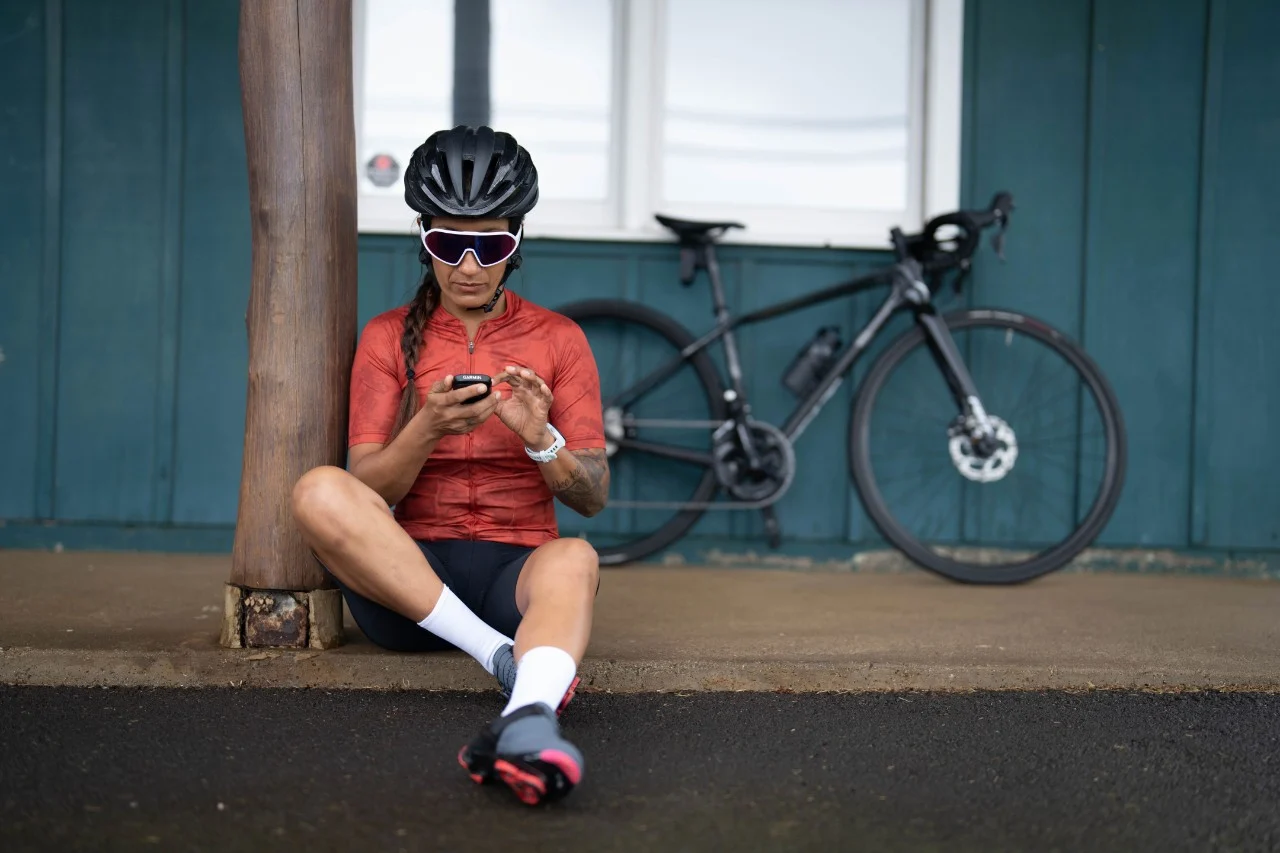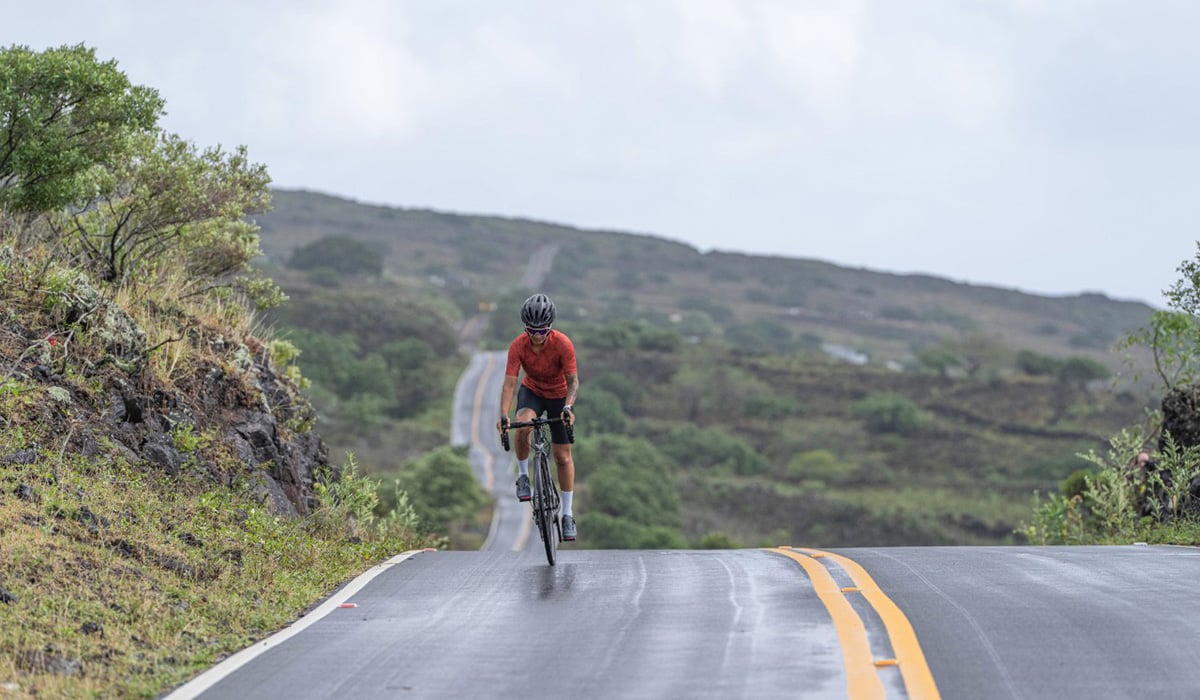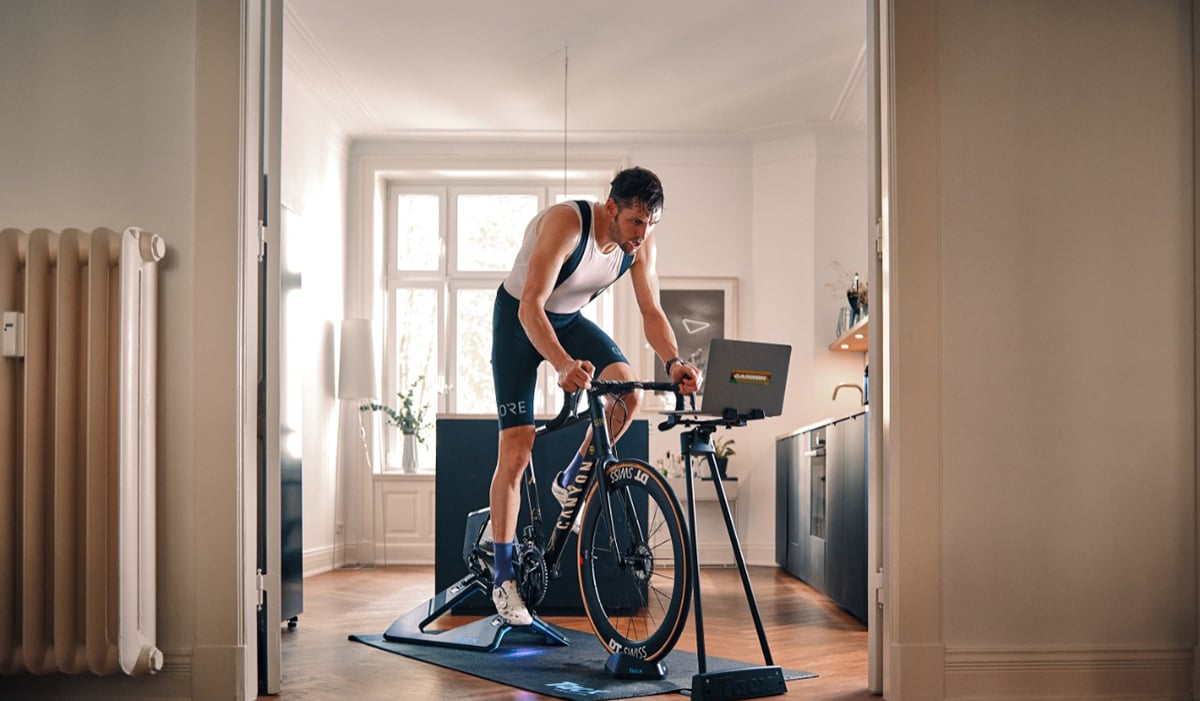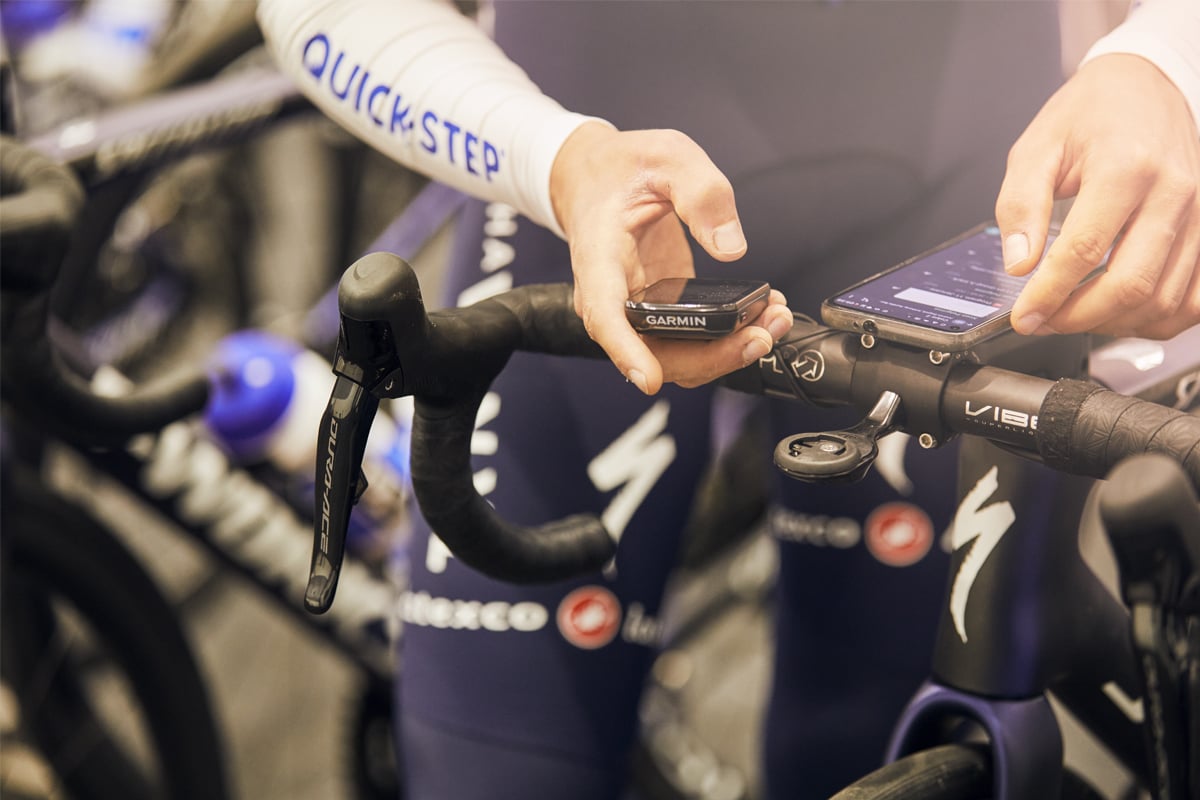
The importance of data with Quick-Step-Alpha Vinyl
Access to reliable, accurate data in real time is a requirement for any modern-day athlete, and the professional cyclists of Quick-Step Alpha Vinyl are no exception.
The “Wolfpack,” as they playfully call themselves, joined Garmin’s 2022 roster of sponsored athletes and is outfitted with Edge cycling computers, Tacx NEO 2T indoor trainers, Varia rearview radars, premium wearables and more. “We are delighted that the team is now on the full Garmin cycling ecosystem. We have been working with Tacx for many years; the Tacx products are as high-quality as Garmin products,” says Ricardo Scheidecker, Quick-Step Alpha Vinyl technical and development director. “A sponsor that constantly improves its products and is looking for innovations is the exact type of sponsor for us.”
Correct and precise data
Scheidecker explains that the team is driven by measurable performance improvements. “With the help of the full range of Garmin’s technology, we get all the data we need to process in order to get the best out of our riders. Besides the quality and precision, we’ve got a massive range of features that gives us all kind of interesting data.” Apart from the data, Scheidecker also praises the versatility of the products, like the Edge. “Just the fact that we’ve got the possibility to tailor the device for each rider. Some riders prefer the GPS maps during the race or want to see their power data. Others don’t need these and want to see other data fields. Therefore, the versatility of the Garmin devices is so important. Honestly, I’ve never ever heard any rider ask for a feature that doesn’t exist on a Garmin that we use. It’s simply all there!” Scheidecker added he’s a fan as well of the Edge connectivity with other devices, like a power meter or heart rate monitor. “We need this all to work perfectly together. This is something crucial for us. We definitely took a step forward within this category. I also want to add the importance of the battery life. The Garmin Edge devices just last. It’s part of the reliability of the products.”
Pro rider Zdenek Stybar, part of the team’s roster since 2011, has seen an increasingly important role for data over all those years he’s been cycling. “Cycling is moving more and more toward data analysing in order to improve you as a rider. When I was 15, I started to train with a heart rate monitor, and this is where I began to analyse myself. Then came the first head units with navigation, followed by power meters. There were a lot of big improvements over the years. Plus, the coaches have more knowledge about data analysing so we understand it so much better. This ensures that even the ‘older’ riders like me can still improve nowadays. The Garmin products support me quite a lot because it’s very crucial to collect all the data from training and racing. You simply really need a good device that shows the data correctly.”
The usage of data during training and races
On the bike, the riders get all the info they need on their Edge device; power, heart rate, cadence, distance, the route, nutrition alerts, you name it. Based on their preferences, each rider has the option to tweak the interface and the number of data fields he wants to use. But they can obviously also use a different Edge head unit. “Coming back to the versatility of the devices,” Scheidecker explains, “It’s great to have the option to select a bigger or smaller device. If you are in the mountain stages, it’s very interesting to have a lighter device like the Edge 830 or even the 130 Plus. It gives us the exact same data recording and exposure as the bigger devices. But there are riders who just always race with the Edge 1040 Solar, even though it’s heavier. They want to have the bigger screen for the maps or are just used to it. Other riders need less data and use a smaller device.”
When it comes to his favuorite device, Stybar is clear: “I love the 1040! Just because the maps are really big. Especially for training this is very useful. You know, I love to make a new route before my training, even on places where I regularly train to avoid riding the same route over and over again.” For racing, the type of race the Spring Classic specialist puts on his screen varies. “Mostly I have the map with an extra data slide showing speed, power, time and distance. Those are, for me, the most important. But actually, I’m really used to using the maps. Especially in the downhills so you know which corners are coming up. Smooth or sharp, can you go full gas or do you need to break? That’s really important to me. But I also use it for the orientation and to know in which direction the route is going. If the wind is coming from the right side and you know the route will turn to the right in a couple of kilometres, you can prepare for that. Besides, during a Spring Classic you simply don’t have time to take a look at the data screen because you always go left and right and up and down. But like for a mountain stage or time trial, when you really want to set your own pace based on watts, then it’s very useful in order to stay within your limits.”
After each ride, whether it’s a training or race, all the data from the Garmin devices is stored into Garmin Connect, an interactive platform used by millions of users worldwide to track, analyse and share health and fitness activities. From here it all automatically transfers to TrainingPeaks, where the coaches start analysing the data like cadence, speed, power, and heart rate. Based on this, they can see where the riders can improve and what they will do during the next day’s ride. They check this on a daily basis and send the riders a detailed report about the training afterwards.
Recording data off the bike
New this year for the Quick-Step Alpha Vinyl team is the addition of Garmin smartwatches. Both riders and team members use the Forerunner 955 Solar. By measuring things off the bike, like their other activities, sleep, heart rate and stress, they get the 24/7 athlete concept. Just like with the Garmin Edge, all this data uploads and synchronises automatically into Garmin Connect. This offers the coaches a broad range of extra data that will help them to create a holistic perspective.
“This is a new category for us, but everything turns around measuring your body. When I started using a Garmin wearable, I was just blown away with everything we can take out of it. It’s fantastic! From sleeping to what you do over the day, we can have tons of information that will help our performance team, doctors included, to see if there are any issues, how the riders are in terms of body battery and so on. Everything you will do can be measured, recorded and analysed afterwards. It’s very, very interesting,” Scheidecker concluded.
Ready to ride like the pros? The Garmin cycling ecosystem has something for everyone, whether you’re just getting comfortable with riding a bike around the neighbourhood or you’ve been competing for years. We’ll see you out there.
